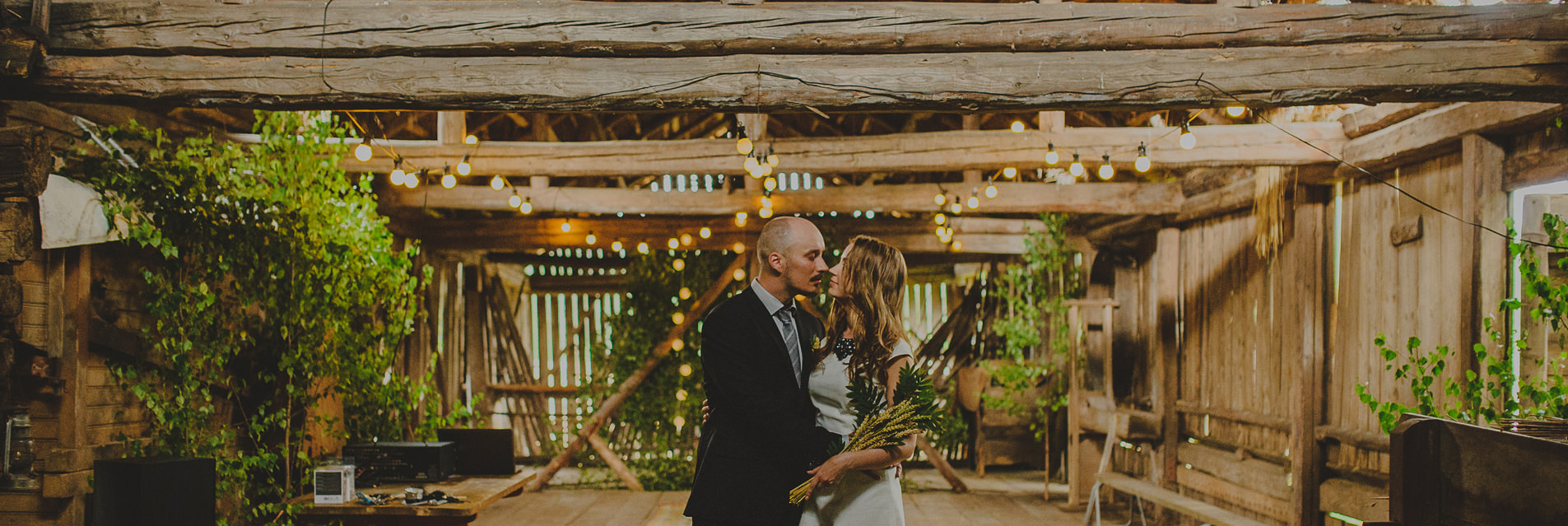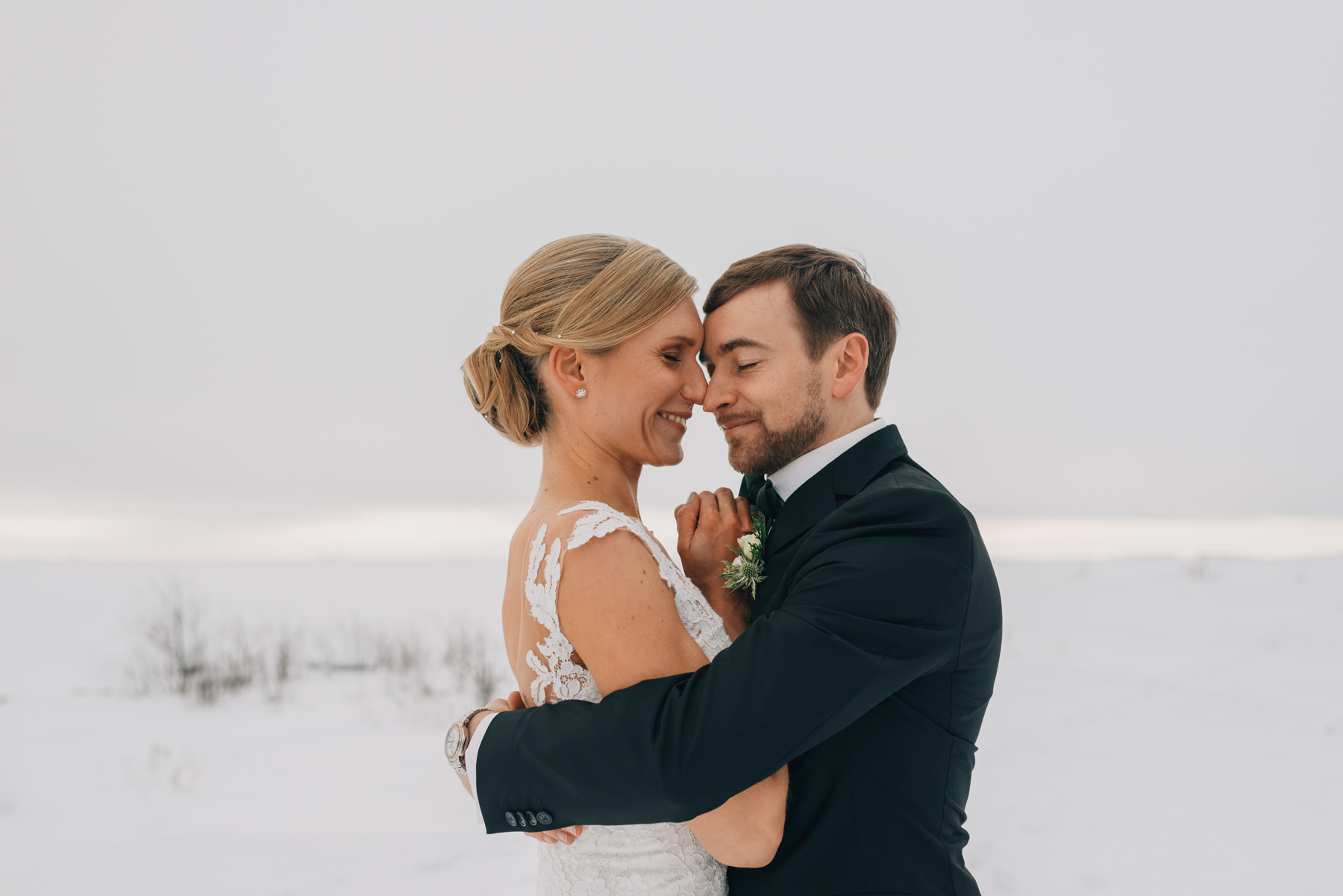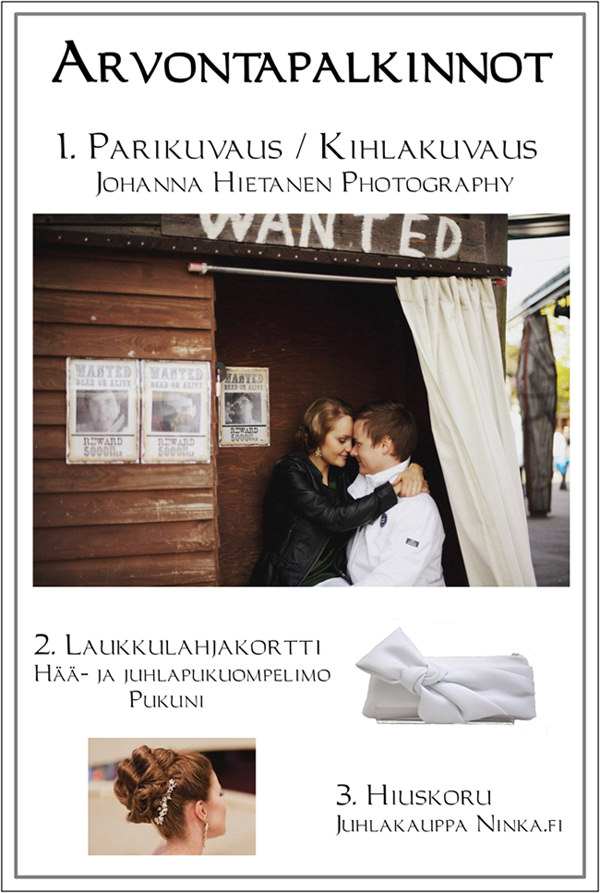Tips from a wedding photographer: choosing a wedding ceremony location
Part 2: Choosing a wedding ceremony location
Choosing the wedding ceremony location is one of the biggest decisions you will make for your wedding day. While some people prefer a traditional church wedding, many couples want to avoid the extra hassle and stress of traveling between locations on the wedding day by changing the vows in the venue’s courtyard, for example. There is no right or wrong choice, there is only the one you prefer.
This article discusses how your choice affects the final outcome of wedding photos.
Although a professional photographer can work in any kind of location and lighting situation, churches and indoor/outdoor locations are always very different and the circumstances will affect the final result.
We now continue our “Tips from a wedding photographer” series with tips on choosing a wedding ceremony locations from a wedding photographer’s point of view.
CHOOSING A CHURCH
A church is a church, what is the difference? There’s the altar, the aisle, the pews, the priest, the couple, the guests. We wrote more about shooting in church here, so let’s get more into the end result of the images in different churches. The biggest problem we have encountered in our career is the very poor lighting in churches. Darkness is not a problem for us, but when mixed lighting is brought into the mix with everything from natural light to incandescent to energy saving bulbs, the result is a mixed white balance and a little agony when editing images. This is why so many mainly natural light photographers prefer black and white when editing ceremony photos taken in a church, as it brings coherence to the images and balances the image – in churches, it is rarely appropriate to use flash to balance the tones and even if it were, the focus would be (in our opinion) too much on the photographer and breaks the serene atmosphere of the ceremony.
In this picture, taken in a church in Tuusula, a slight shift in white balance is noticeable. If you look to the left of the bride and then to the right of the groom, you can see how the white part of the altar looks slightly different on each side. The truth is, however, that few people probably notice these little things, and that’s the way it goes – knowledge often adds to the pain for professionals. Fortunately, white balance is usually the least of the problems.
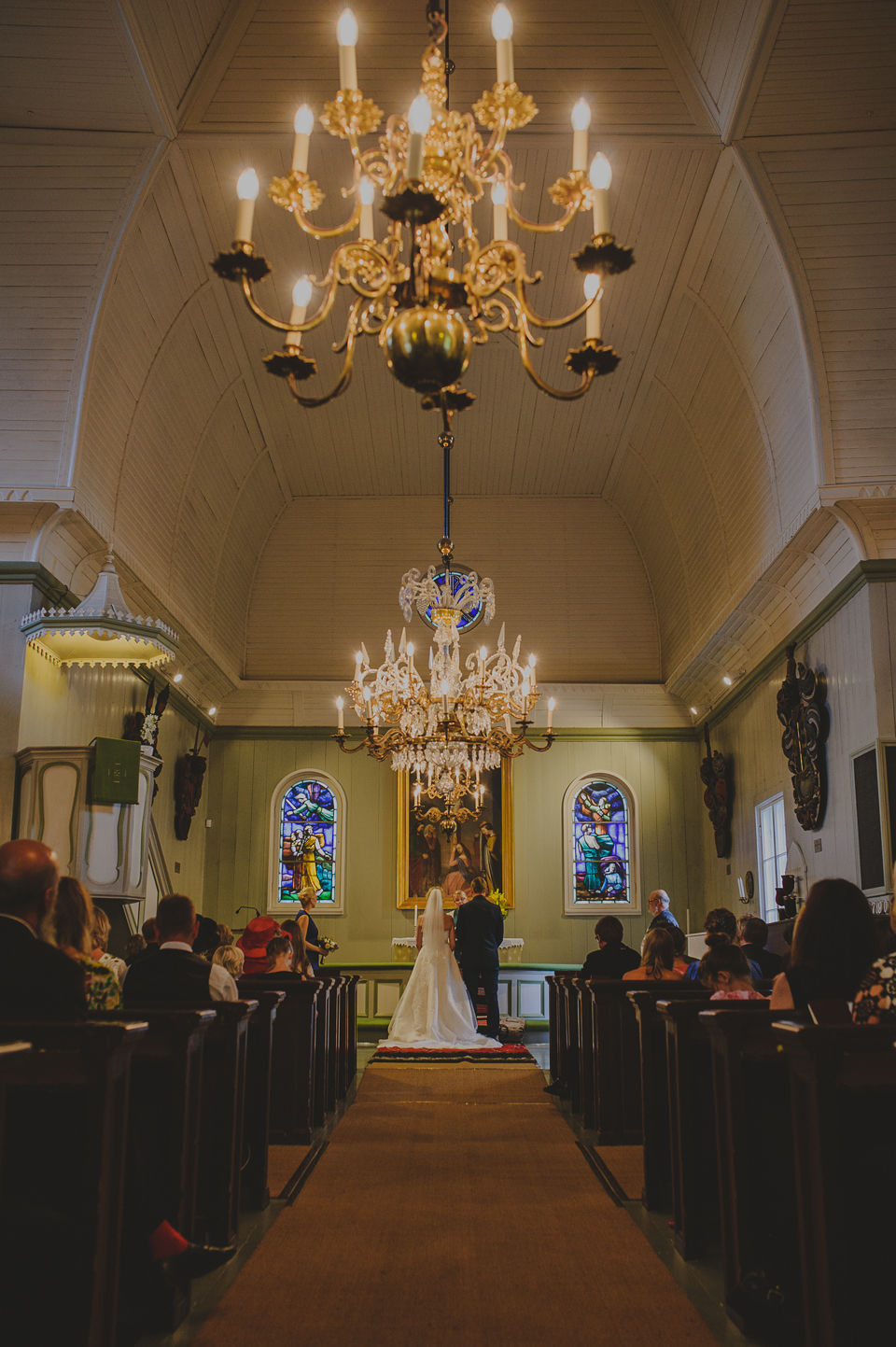
Many churches also have spot lights above the aisle. An example is the Church of St. Laurentius in Vantaa. So why are spot lights bad? This is why.

In the first picture, you can see how the bridemaids’ faces are covered with sharp shadows, making it look like there are only black spots as eyes. In the next picture, there are not so many shadows, because the bride is walking with her father in a place where there are no spot lights. However, it is not always possible to get a usable image in just the right spot (if a subject blinks for example), which sometimes results in a less than perfect image to be delivered to the client where facial expressions are good but the light might not be ideal. The disadvantages of spot lights are also highlighted in otherwise dark churches like this, where there is no other light coming from the sides to balance the situation.

On the altar of the same church, spot lights are aimed from both sides to illuminate the altar and the wedding couple as seen from the guests’ perspective, but no light comes from behind the priest to illuminate the wedding couple, so the same shadows come back into play. The situation is especially noticeable on the bride’s face.
So what are the churches where we think the lighting has been done brilliantly (often already at the construction stage)?
For example, last summer, a new acquaintance in Helsinki, the Mission Church. The altar and the whole church are mainly lit by natural light from the windows, and the rest of the lighting is concentrated around the edges of the church, and therefore does not conflict with the natural light. There are also two large windows on the left side of the church, which nicely balance the lighting. Just look how beautifully the light is distributed on the altar and on the faces of the couple! You can also see the big difference between evenly distributed light and spotlights. No nasty shadows.
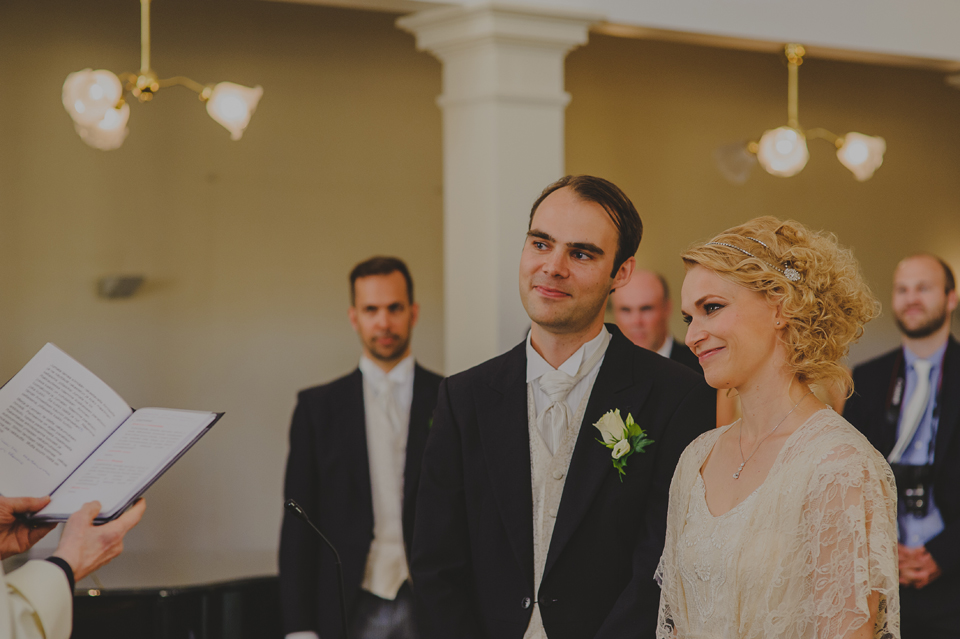
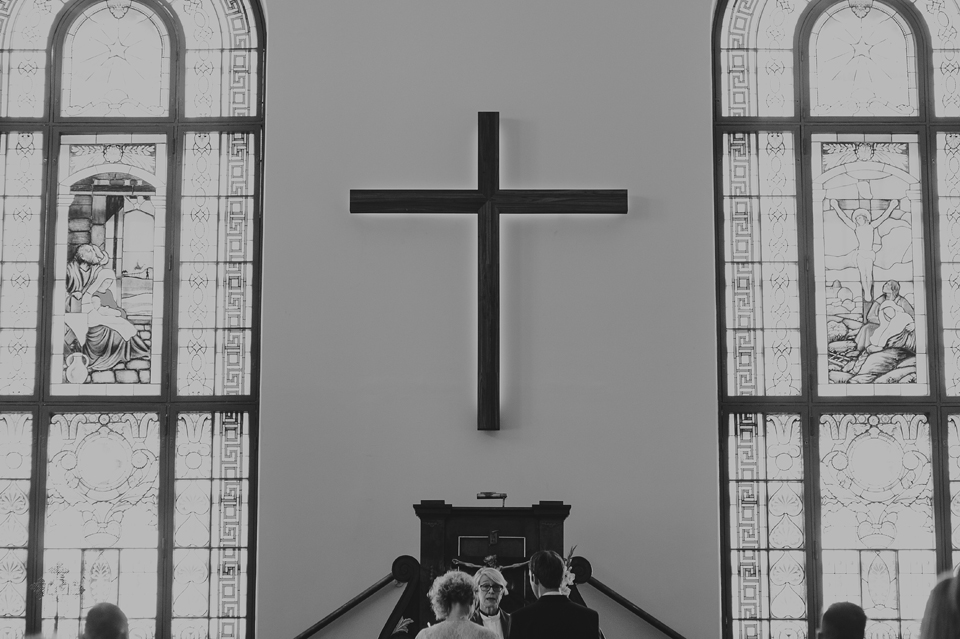
For lovers of non-traditional churches, the Temppeliaukio Church is a great choice. This church seems to divide opinion among photographers quite completely. Where one loves, the other hates. It’s true that on a sunny day it can be very challenging to shoot in a church, but knowing where to take the pictures avoids unnecessary crises in post-processing.

In this church, it is also worth considering what’s happening outside of the church. If you don’t want tourists at your wedding, you should preferably head elsewhere.
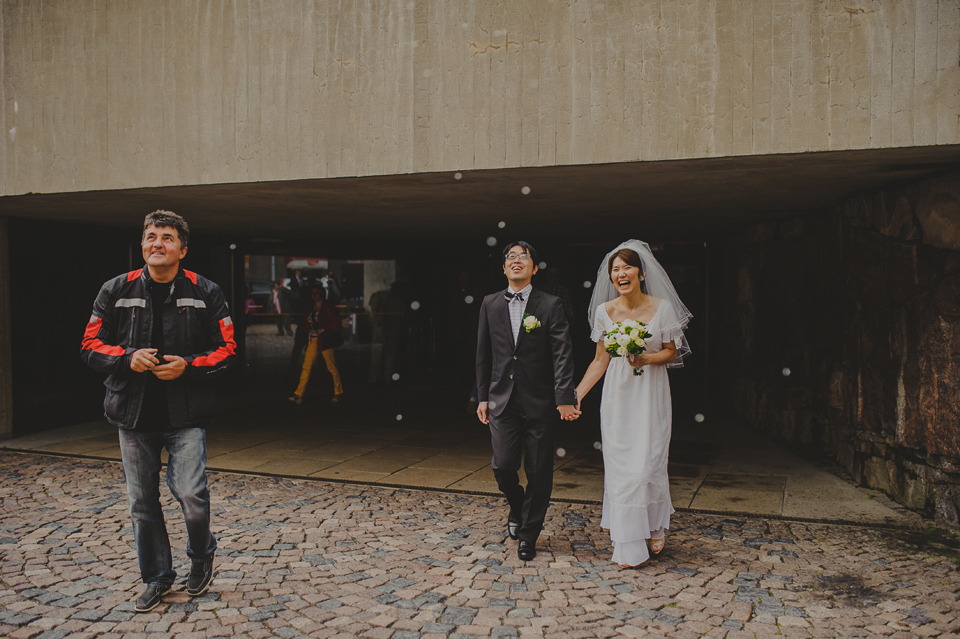
There are still churches without artificial light at all (if you don’t count candles).
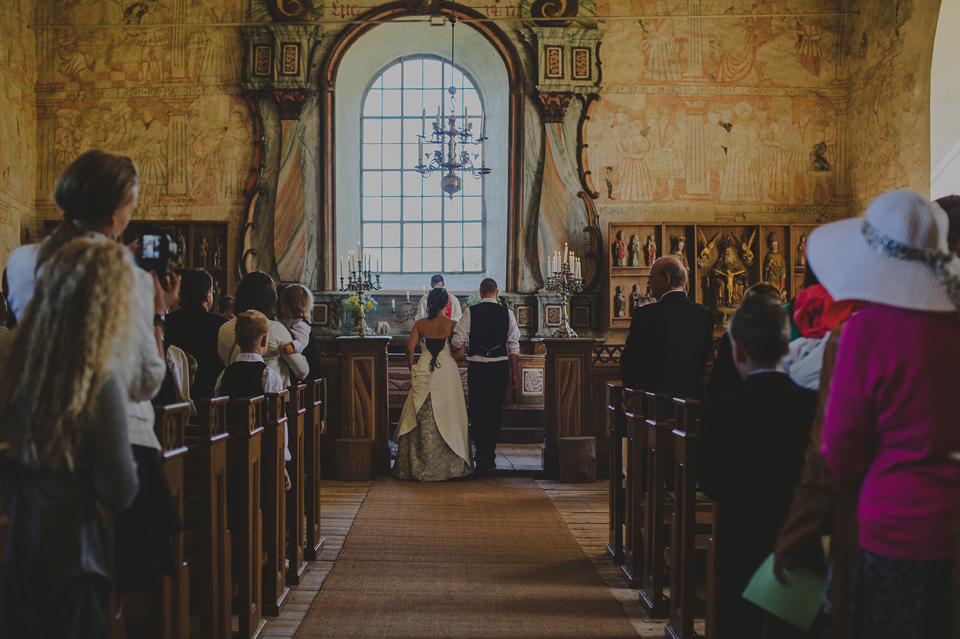
Some might find The Old Church of Isokyrö to be terribly dark, while we fell in love with all the history you can feel when you’re there. And it wasn’t even dark there in the summertime, at least not for our cameras.
The natural light is not always so wonderful either. The disadvantages of direct sunlight are visible in the following church in sunny weather.
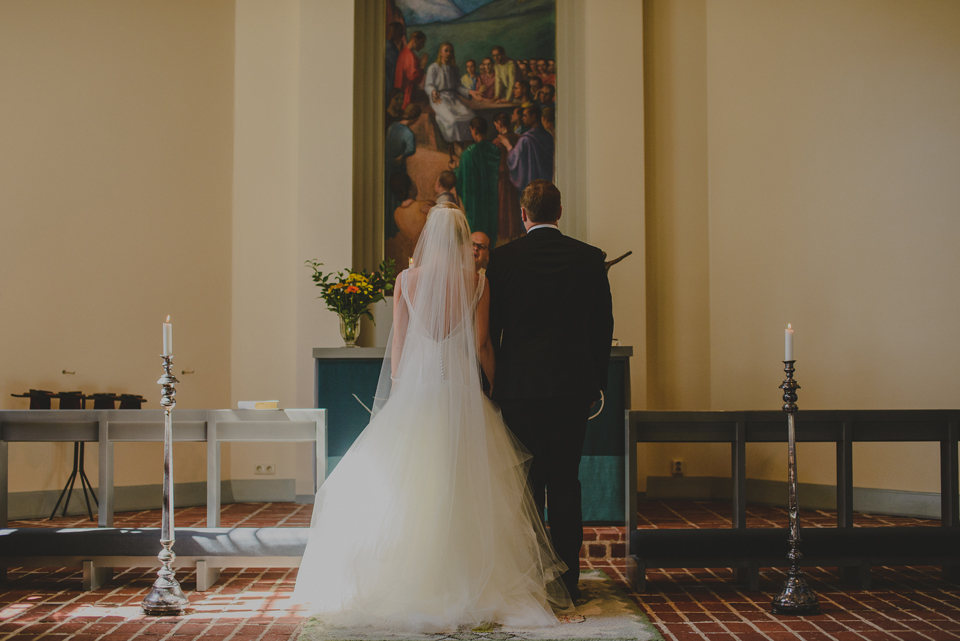
In Kulosaari church, the sunshine from the window on the left side of the altar can easily burn the details in bride’s white dress in the photos. The church is ideal in cloudy weather for lighting, but in sunny weather you have to be very careful at certain times of the day. This image was also originally underexposed quite a bit, but the sun still managed to do some damage. In a small church, the problem is compounded because the church is not very wide and the window is so close to the altar. In a wider church, the sunlight rarely gets this close to the couple.
Summa summarum: if you like contrast, playing with light and shadows, choose a church where the light comes strictly from only a few light sources, whether spotlights or natural light. Combined with a dark church, you get drama in your images. But also accept the fact that in these churches you don’t get evenly lit images at all points.
When choosing a church, it is also worth considering:
- The layout of the church – are the pews bolted to the walls, how freely can the photographer move around?
- The more restricted the layout, the more one-sided photos you’ll get.
- It is not always desirable to wander back and forth in the central aisle. How is the altar built, how close can the photographer get to the couple?
- Does the priest or churhc have any restrictions on photography?
- Does the church also have an aisle in the middle, where you can get a close-up view of the possible situation where the father gives away her daughter?
CHOOSING AN OUTDOOR WEDDING CEREMONY LOCATION
There has been a marked increase in ceremonies taking place outdoors, which is absolutely fantastic! From a photographer’s point of view, this offers a lot more opportunities to move around and with that angles to take photos. Church weddings have a strong tradition in Finland, but it’s great to see that people are also starting to think outside the box. You can also have a religious wedding ceremony outside the church itself – you can ask the priest to perform the ceremony elsewhere for a fee, with the priest’s consent and within the church’s area of operations, of course.
However, the choice of location matters, as does the timing. When the sun is shining from a cloudless sky, the it casts sharp shadows, but somehow it looks more natural in photos taken outdoors than indoors. You never know, maybe we just like the outdoors so much! ;)
In many cases, the ceremony location is the courtyard of the venue for example. You’ll get back inside quickly or you can continue the celebrations outside in good weather.
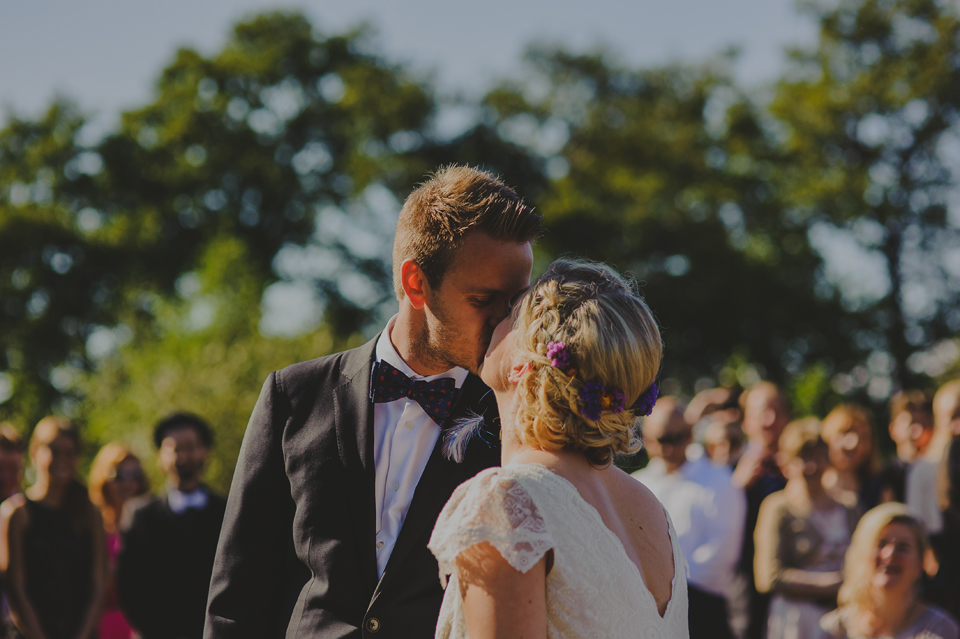
A wedding ceremony at Ravintola Uunisaari on the rocks in the backyard. The photo was taken in September afternoon, when the sun is no longer very high, but there are still noticeable shadows. Fortunately, the bride’s white dress always acts as a little reflector and balances the shadows a bit.
Solutions for a sunny day: have the ceremony under a canopy or choose a large tree to shade the ceremony site.
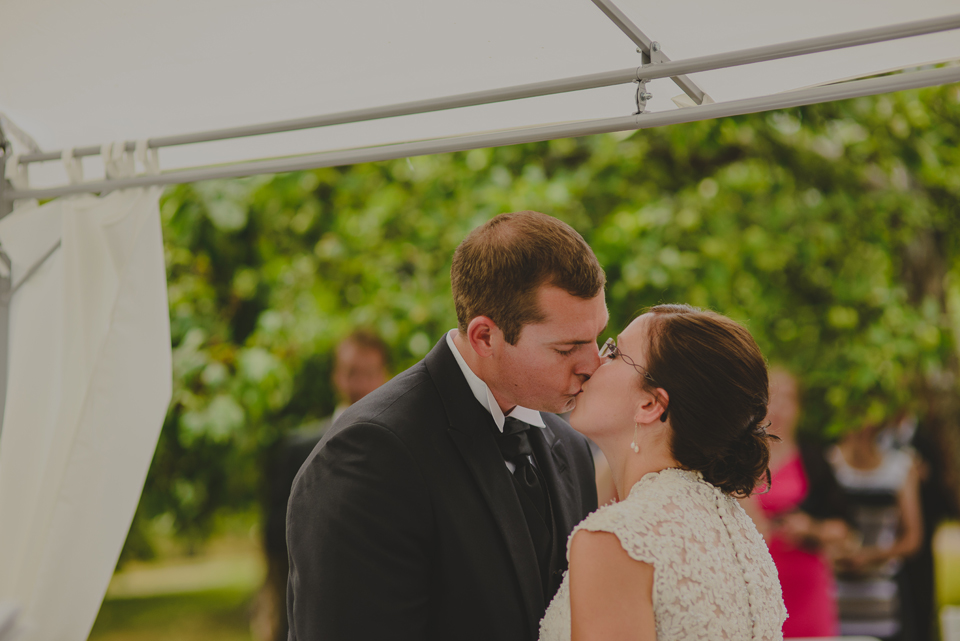
Wedding ceremony in Naantali in the yard of Tammiston Tila, surrounded by apple trees. At the time of the shooting, the weather was partly cloudy, with frequent changes in lighting.
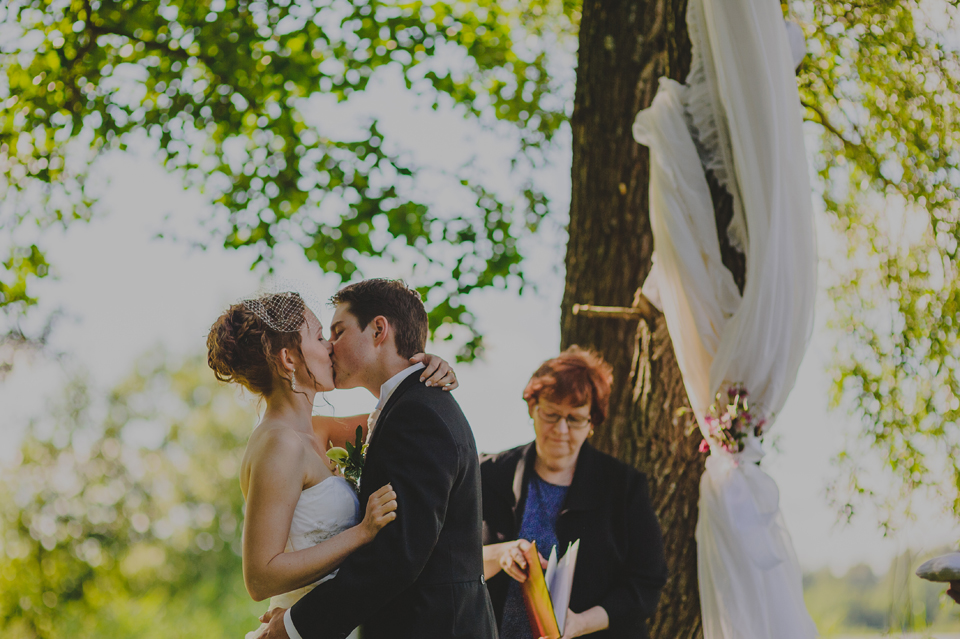
Wedding ceremony in the garden of Hotel Gustavelund, on the shore of the lake, under the shade of trees. Although the sun shone from an almost cloudless sky throughout the ceremony, from the other direction, no steep shadows formed.
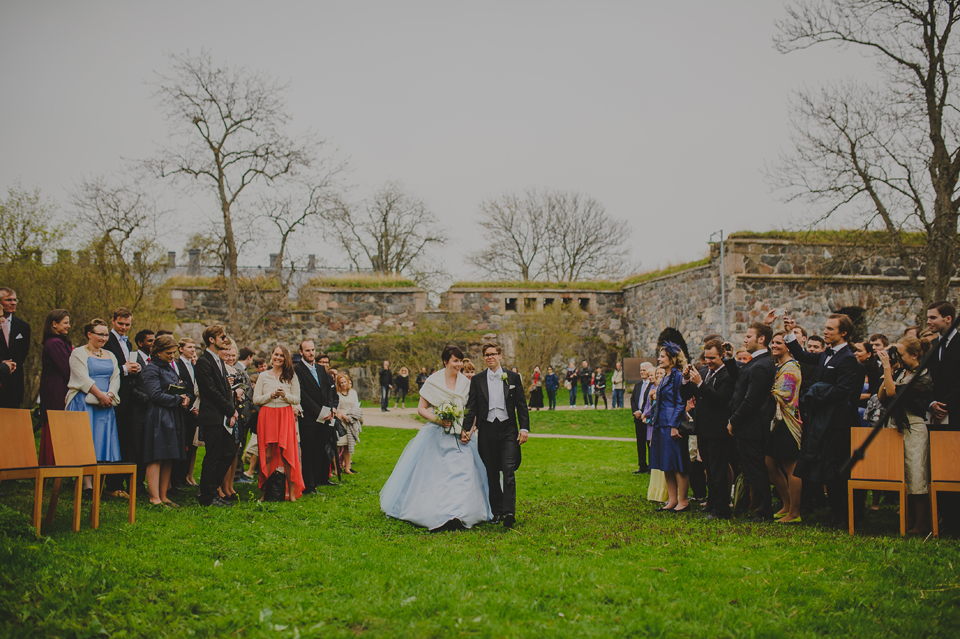
The wedding ceremony in Piper’s Park at Suomenlinna Island. Although there was some tension before the ceremony about whether it would rain or not, the clouds remained rain-free.
When choosing an outdoor space, you should also consider:
- Practicality – is it easy to walk to the location in your chosen dress?
- Can all guests be within sight/hearing distance?
- Is it easy to arrange seating, especially for older people, or for everyone if necessary?
- What about the sound system if you have a lot of guests and poor reception?
- What if it rains, can you find a canopy if necessary, or can you easily move the ceremony indoors at short notice?
- Where do you go into hiding after the ceremony or does the programme continue directly after the ceremony?
CHOOSING A CEREMONY LOCATION INSIDE
If you don’t want to worry about the possibility of rain, you should choose an indoor location. In many cases, a venue or an outbuilding is a good place for the ceremony. There are many good sides to this – it’s easy for guests to arrive in one place, and there’s no need to organise the transition from, say, the church to the venue, or to put up extra signs on the roadside (remember, by the way, that you need to apply for a temporary signage permit!) The party gets off to a fast start, which adds flexibility and a relaxed atmosphere to the day’s schedule.

The wedding ceremony is held in the Old Loukasmäki Rectory, one of the courtyard buildings of this historic farm. As the National Board of Antiquities has not given permission to repair the roof of the historic reef, a thunderstorm brought excitement to the wedding day, and there was no avoiding getting wet as rain splashed through the roof of the wedding venue.
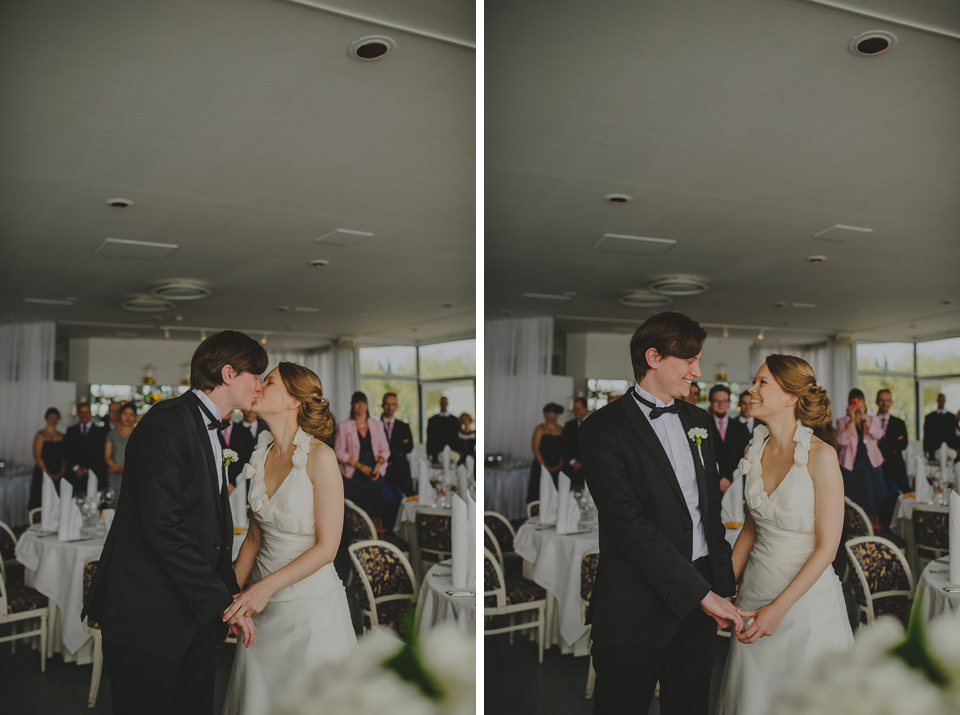
Wedding ceremony at Kulosaaren Casino. Kulosaaren Casino’s Sun Marine ballroom is lighter and brighter than the adjacent Merisali, making it a beautiful wedding venue. After the ceremony, the couple and guests headed to the courtyard where the congratulations took place.
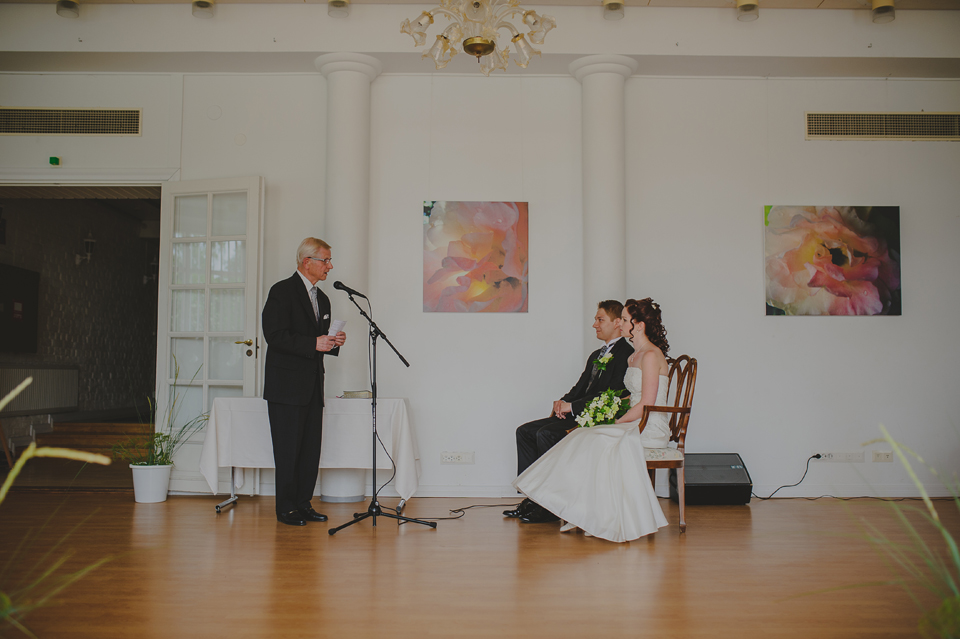
Kartanohotelli Ruusuhovi‘s main building downstairs works well as a wedding venue and therefore does not interfere with the wedding preparations taking place upstairs when a separate room is used for the ceremony.
When choosing the indoor space, it is also worth considering:
Is the venue with all its decorations also suitable for a wedding venue? Will the space have to be rearranged after the ceremony? Will the photographer be able to move around freely or will tables and other guests be an obstacle?
————
When choosing any wedding venue, it’s a good idea to go and see the venue during the same time of year as the wedding. If you’re getting married in December, you won’t get the right idea if you go in June. Go on a sunny day and a cloudy day if possible. This way you can see how the atmosphere changes depending on the weather. It’s also a good idea to look online, for example, for examples of pictures of the options and see what you like best. You can’t always afford to choose, especially in places where there isn’t more than one church or where your favourite church is already packed on your wedding day. So go with what you’re given and adapt your thinking to the prevailing circumstances. Or change the wedding date.
Always consult your wedding photographer if you have any questions about the church or the wedding venue. This will give you a good idea beforehand of what your wedding photographer will be doing and what kind of pictures will be taken. But the photographer’s eye sees things a little differently and the “perfect conditions” may not be ideal.
Always check with the celebrant/officiant if they have any wishes or restrictions regarding photography. Fortunately, Finland is still very easy when it comes to officiants and churches and photographers have behaved so well that there are not many restrictions. We have heard from foreign colleagues that in the United States, for example, photography in churches is completely banned or restricted to the back of the church. In many cases it has turned out that the banning party in question has had a bad experience with a photographer who has flashed away, pushed up next to the priest at the altar or otherwise simply disturbed an important ceremony with his appearance.
With these tips, good luck on your hunt for a ceremony location that fits your needs!
P.S. Do you have any good tips to add? Speak your mind!
Part 1: Choosing a wedding photographer (translation coming)
Article edited 1.2.2024

